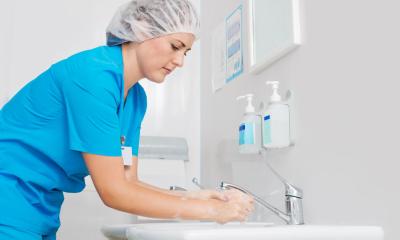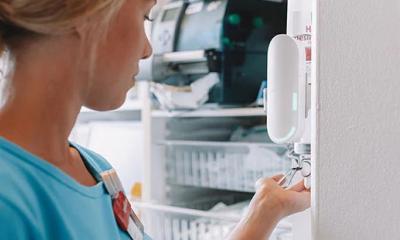NICE sets new guidelines
Pointing out that it is unacceptable that some 300,000 people become adversely infected while being in the care of the UK’s National Health Service every year, the National Institute for Health and Care Excellence (NICE), which provides national guidance and advice to improve health and social care, has launched a new set of quality standards.

Professor Gillian Leng, NICE Deputy Chief Executive and Director of Health and Social Care, said: ‘It is unacceptable that infection rates are still so high within the NHS. Infections are a costly and avoidable burden. They hinder a patient’s recovery, can make underlying conditions worse, and reduce quality of life.’
The standards include guidance for improved hand-washing and catheter insertion. All healthcare professionals are told to follow simple actions, particularly cleaning their hands immediately before and after seeing every patient.
Additionally, NICE points out that infections can occur in otherwise healthy people, especially if invasive procedures or devices like urinary catheters or vascular access devices are used. These infections can also be passed on to healthcare workers, family members and other carers.
The organisation’s latest set of specific, concise and measurable statements to cut infections are based on the institute’s own guidance and other guidance accredited by NICE.
If these are delivered collectively as quality care standards, NICE believes there should be improvements in the effectiveness, quality, safety and experience of care that people receive.
The quality standards advise that antibiotics are prescribed in accordance with local antibiotic formularies, as part of a system to stem resistance of infections to antibiotics; also, as stated, patients are tended only after medics immediate hand washing, which must be repeated immediately after the contact; and healthcare workers must minimise the risk of infection to patients needing a urinary catheter or a vascular access device, by following procedures to ensure they are inserted, looked after and removed correctly and safely.
Professor Leng added: ‘Although there have been major improvements within the NHS in infection control, particularly in relation to C. difficile and MRSA bloodstream infections in the last few years, HAIs are still a very real threat to patients, their families and carers and staff. This quality standard gives primary, community and secondary care services the most up-to-date advice on the best ways to minimise infection risks.’
Carol Pellowe, from Guy’s & St Thomas’ NHS Foundation Trust and a member of the committee that developed the standards, said: ‘This quality standard will promote best practice in infection prevention and control and, by providing key areas for action, encourage organisations to sustain their efforts in ensuring patient safety.’
Profile:
Professor Gillian Leng is Deputy Chief Executive at NICE, the Director of Health and Social Care, and a visiting professor at King’s College London. Having trained in medicine at Leeds, she spent several years researching the epidemiology of peripheral vascular disease at Edinburgh University. Involved in the Cochrane Collaboration from the beginning, as an editor she still contributes to the EPOC Group (Effective Practice and Organisation of Care). Also a specialist in public health medicine, the professor has worked as a consultant before moving to NICE in 2001. At the organisation, she has been responsible for the initial set up and running of the clinical guidelines programme; establishing the NICE implementation function; setting up NHS Evidence, and for new work on quality standards across health and social care.
03.07.2014





